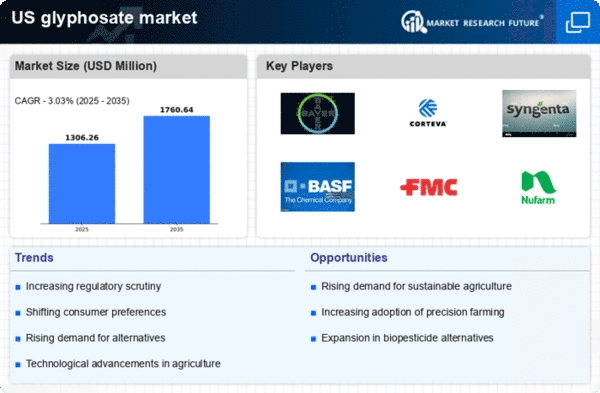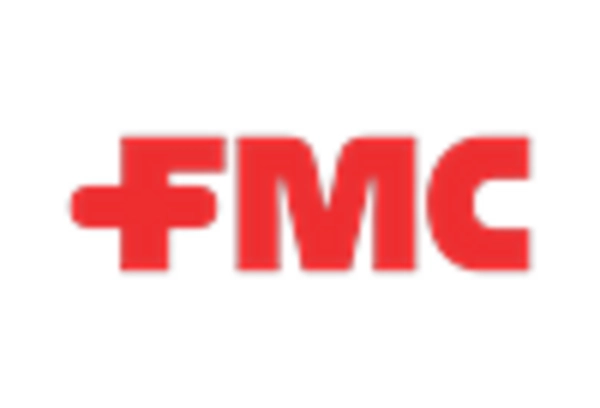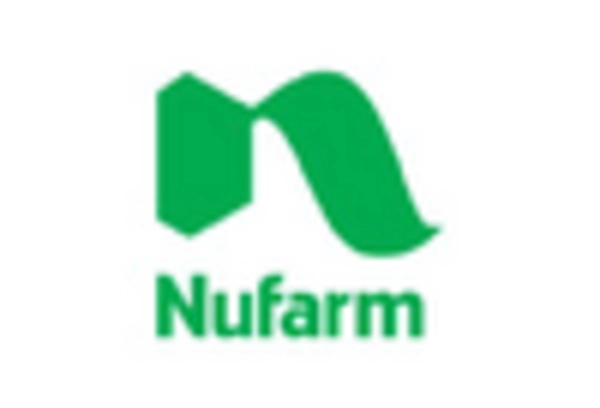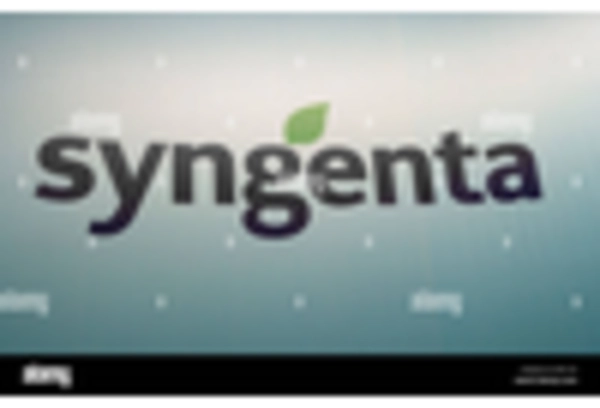Rising Demand for Herbicides
The glyphosate market is experiencing a notable increase in demand for herbicides, driven by the need for effective weed management in agricultural practices. As farmers seek to enhance crop yields, glyphosate's efficacy in controlling a wide range of weeds makes it a preferred choice. In 2025, the herbicide segment is projected to account for approximately 60% of the total agricultural chemicals market in the US. This growing reliance on glyphosate reflects its role in modern farming, where efficiency and productivity are paramount. The glyphosate market is thus positioned to benefit from this trend, as agricultural stakeholders prioritize solutions that maximize output while minimizing labor costs.
Rising Costs of Alternative Herbicides
The glyphosate market is benefiting from the rising costs associated with alternative herbicides. As prices for other herbicides increase due to supply chain disruptions and production costs, glyphosate remains a cost-effective solution for farmers. In 2025, the average price of alternative herbicides is projected to rise by 10%, making glyphosate an attractive option for cost-conscious agricultural producers. This economic factor is likely to drive further adoption of glyphosate in various crops, reinforcing its position in the glyphosate market. Farmers are increasingly recognizing the value of glyphosate as a reliable and economical herbicide.
Expansion of Genetically Modified Crops
The glyphosate market is significantly influenced by the expansion of genetically modified (GM) crops, which are engineered to be resistant to glyphosate. This development has led to an increase in the adoption of glyphosate as a primary herbicide, as farmers can apply it without damaging their crops. In 2025, it is estimated that over 90% of soybean and cotton crops in the US are genetically modified, further solidifying glyphosate's market presence. The glyphosate market is likely to see continued growth as the trend towards GM crops persists, providing farmers with effective weed control options that align with their agricultural practices.
Increased Focus on Sustainable Agriculture
The glyphosate market is also being shaped by the increasing focus on sustainable agriculture practices. Farmers are increasingly adopting integrated pest management (IPM) strategies that incorporate glyphosate as part of a broader approach to weed control. This shift is driven by consumer demand for sustainably produced food and the need to reduce environmental impact. In 2025, the market for sustainable agricultural products is expected to grow by 15%, indicating a shift in farming practices. The glyphosate market is adapting to these changes, as stakeholders seek to balance effective weed management with environmental stewardship.
Government Support for Agricultural Productivity
The glyphosate market is positively impacted by government initiatives aimed at enhancing agricultural productivity. Various programs and subsidies are designed to support farmers in adopting modern agricultural practices, including the use of glyphosate. In 2025, federal funding for agricultural innovation is expected to increase by 20%, promoting the use of effective herbicides. This government backing is likely to bolster the glyphosate market, as it encourages farmers to utilize glyphosate for improved crop management. The alignment of government policies with agricultural needs suggests a favorable environment for glyphosate adoption.
















